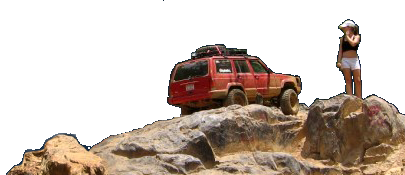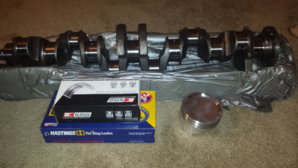Lee
ECGS
- Joined
- Mar 20, 2005
- Location
- Louisburg NC
A little back story. Motor in my 96 xj has died at 275k, been knowing it had issues for awhile. Picked up a running 4.0 a few weeks back that is also a 96+ nvh motor. I originally planned to do a quick stock freshen up with bearings, rings, timing set, oil pump and send the head to the machine shop to have them go through it.
After tearing it down I think I have decided why not build a stroker? Started doing some research and now have a million questions. I have been thinking for ease and sake of time about ordering one of these two kits
http://www.cleggengine.com/jeep-4-0l-stage-1-stroker-kit-9-0-1c-r-4-5l-4-6l-4-7l-242-amc.html
Talked to these guys today, waiting on a full estimate with changing a few things and adding some parts. I would actually be getting 4.0 rods and dished pistons instead. Said I should actually end up with an 8.8:1 cr, no decking of the block. Would have to run one of their cam kits.
http://m.ebay.com/itm/140894789023?nav=SEARCH
Not sure what cr you end up with or if it requires decking the block. Need to call them tomorrow.
Anyways, long story short. Opinions on buying a kit vs buying individual pieces and building your own setup? I know there are a bazillion different recipes to build a stroker.
After tearing it down I think I have decided why not build a stroker? Started doing some research and now have a million questions. I have been thinking for ease and sake of time about ordering one of these two kits
http://www.cleggengine.com/jeep-4-0l-stage-1-stroker-kit-9-0-1c-r-4-5l-4-6l-4-7l-242-amc.html
Talked to these guys today, waiting on a full estimate with changing a few things and adding some parts. I would actually be getting 4.0 rods and dished pistons instead. Said I should actually end up with an 8.8:1 cr, no decking of the block. Would have to run one of their cam kits.
http://m.ebay.com/itm/140894789023?nav=SEARCH
Not sure what cr you end up with or if it requires decking the block. Need to call them tomorrow.
Anyways, long story short. Opinions on buying a kit vs buying individual pieces and building your own setup? I know there are a bazillion different recipes to build a stroker.



